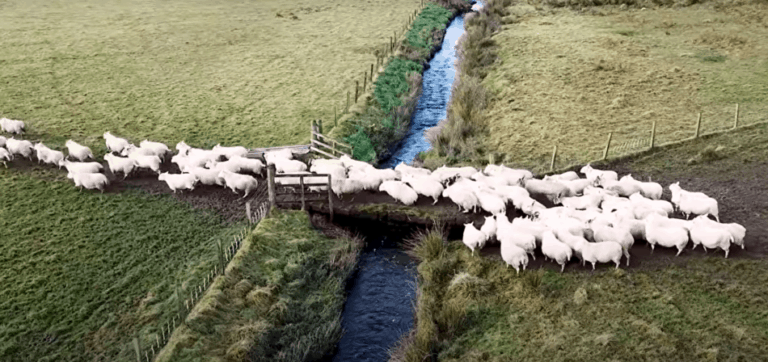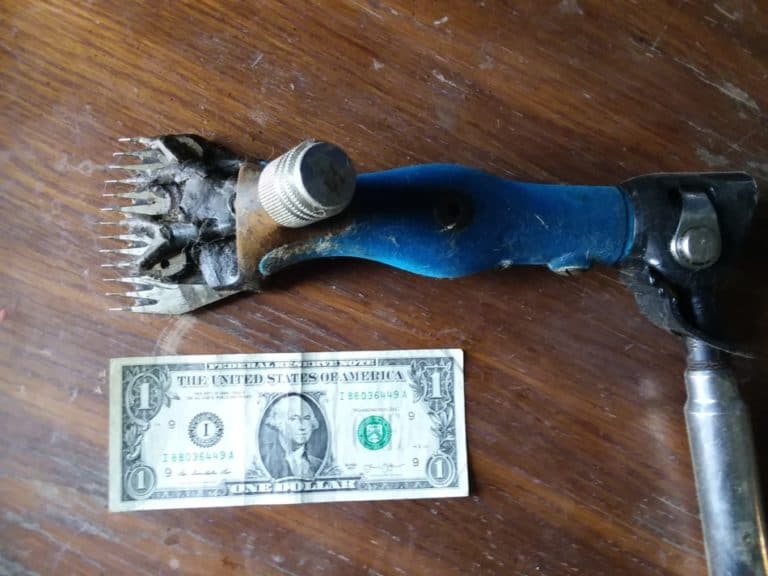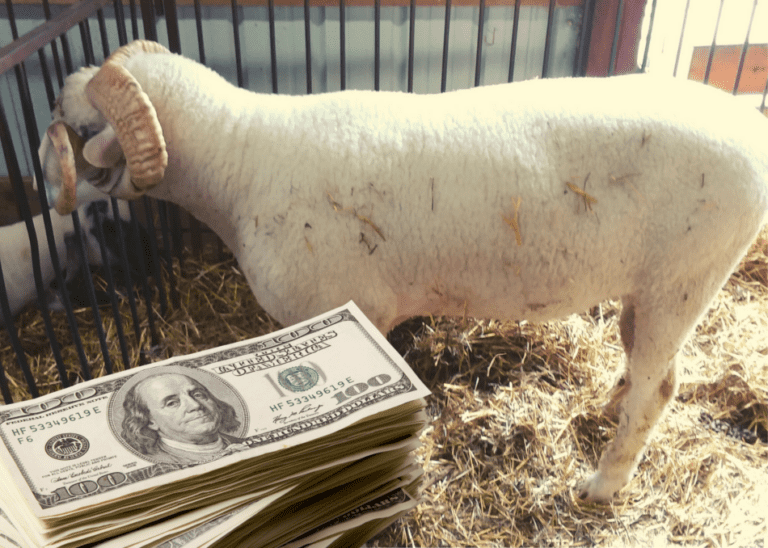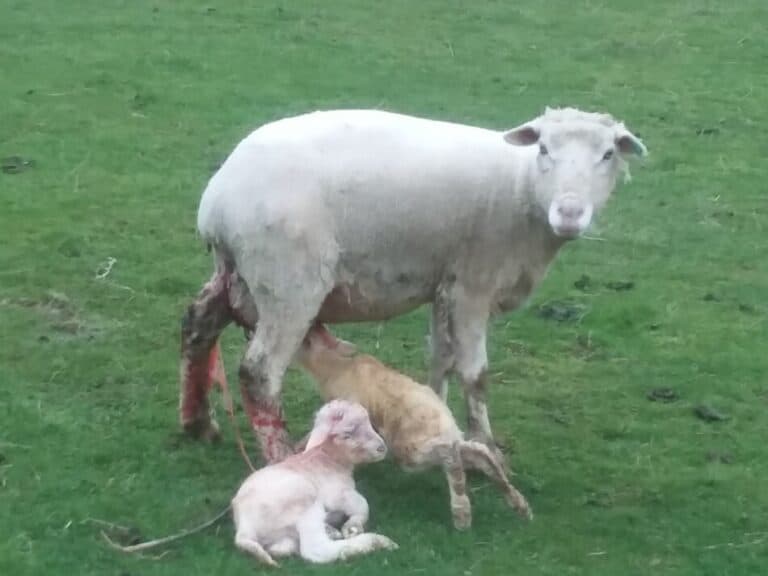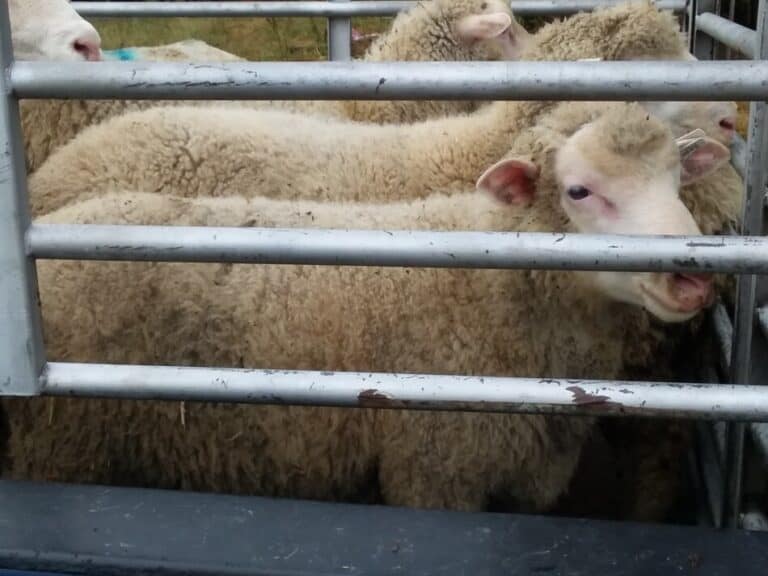How Tall Of A Fence Do You Need For Sheep?
As a sheep farmer, not only are you working with sheep, you are also probably working with some sort of fencing for the flock.
Since sheep are not too tall, they don’t need an overly tall fence but they can jump pretty well, so how high of a fence do you need to contain the flock?
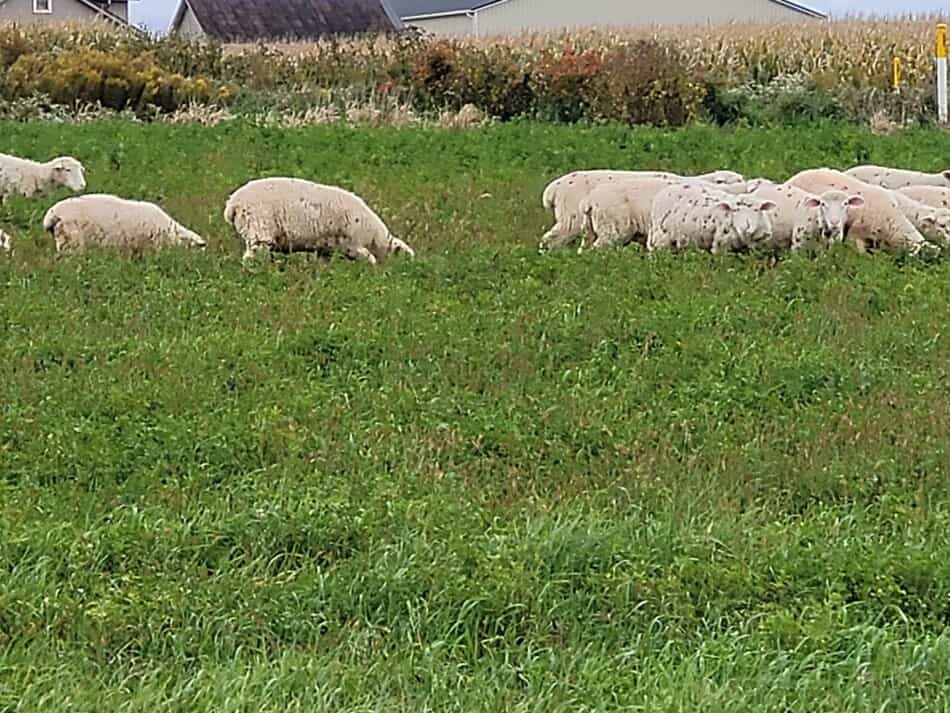
Woven wire for sheep should be 48″ tall
Woven wire for your sheep should be 48″ tall. This fence would be run along the ground and attached to wooden fence posts, so it is quite sturdy.
There are a few types of woven wire that are a bit shorter and these can be used for sheep as well, as long as a line or two of electric is run along the top of the fence to get the total height to 48″.
Sheep Fencing: Electric vs woven wire is an article I wrote to compare and contrast these two types of sheep fencing to see what will work best for your situation (we us a combination of both).
Getting a woven wire put fence up is a lot of work or pricey to have it installed, which is the main downside of this fence. It is also considered to be permanent.
You could take it out and reposition the line, but most folks don’t, so once you decide where you put the fence, it stays. This means that woven wire is secure but with near zero flexibility.
Overall, a woven wire fence is wonderful for sheep, once you have it up.
We just put up a new perimeter line on the west edge of our property last spring. It has opened up an underused area of the farm now that it’s easy to move the sheep there.
We were always cautious about putting the sheep in that spot because it is close to a road and numerous houses, but with the new fence line, that area is as secure as we can make it.
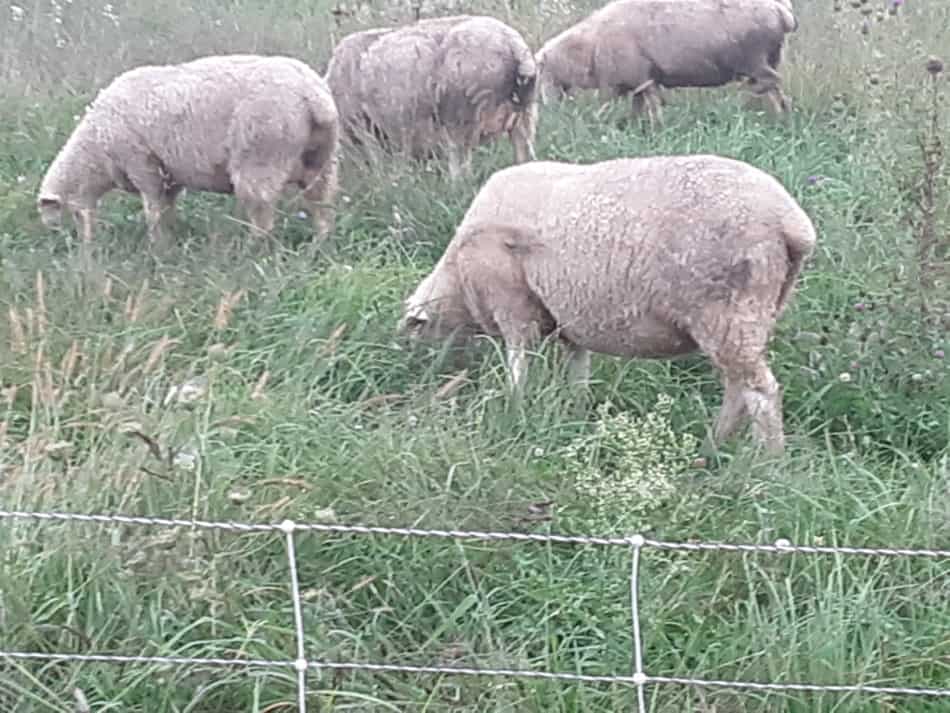
Electric netting should be at least 35″ tall for sheep
Electric netting should be at least 35″ tall for sheep. There is a 48″ tall netting available which is more of a sheep and goat version, which may be needed if your sheep are prone to fence jumping.
Our sheep are kept behind a 35″ netting that works great as long as it is kept upright (no sagging spots) and it has power.
ElectroNet 9/35/12 For Sheep: Should you buy it? is an article I wrote to give the pros and cons of electric netting use with sheep.
Electric netting only works well when it has charge, without charge the sheep will learn to jump over it or just lean into it until they can knock it over enough to leave.
This means that the netting has to be hooked up to the charger but also that the charger has to be working and the fence line is not grounding out.
If the shock is not getting to the sheep when they come up to investigate the fence, the main deterrent of the fence (the shock) is not there so the fence is not working even if the netting is upright.
Single strand wire can be used as a division wire
There are some folks with sheep that keep the flock behind a single strand of electric polywire or polybraid. Please note that this single strand is for a division line only, it is not a perimeter line.
Even the sheep that will stay behind a single strand division line will need to be in a much more substantial perimeter fence, something like a woven wire or a multi strand high tensile.
Cattle and hog panels as sheep fence
You can also use cattle or hog panels as sheep fence. Cattle panels would be taller (48″) and hog panels a bit shorter (36″) but both will work for many sheep fencing needs.
If you have a more jumping prone flock, stick to the cattle panels, just to have the extra security of a taller fence line. We also commonly use cattle and hog panels as temporary gates or corrals with our sheep.
The great news about cattle and hog panels as sheep fence is that they can be put up in a flash, attach them to posts that are already in place or drive in a few T posts to make a new line.
Panels easily replaced or moved
Cattle panels are also easily replaced if something bends them beyond repair, like a tree falling on the line. In this case, you just put the new panel in place and the fence is back in working order.
Cattle panels can also be used as a semi temporary fence line, meaning a fence line that you want to move after a while but probably not move every day or two.
A semi permanent fence would give you the option to put up a fairly sturdy fence line that would not be as difficult to move as a line on wooden posts, which can be moved, as well, just with more hassle.
Cattle and hog panels used to be very close in price, per foot, to that of a woven wire fence, but recently the cost of cattle and hog panels has gone up significantly.
You’ll have to price the cost of panels and posts as compared to other sheep fence options in your area to see which is more economical for you.
Hog panels for lambs, cattle panels for ewes
We tend to use the hog panels with lambs, for instance weaned lambs, since these are tall enough to keep the lambs in but short enough that we can step over to get into the pen.
Cattle panels are used for adult sheep or situations where the sheep will be under more pressure, like tightening down a group for deworming.
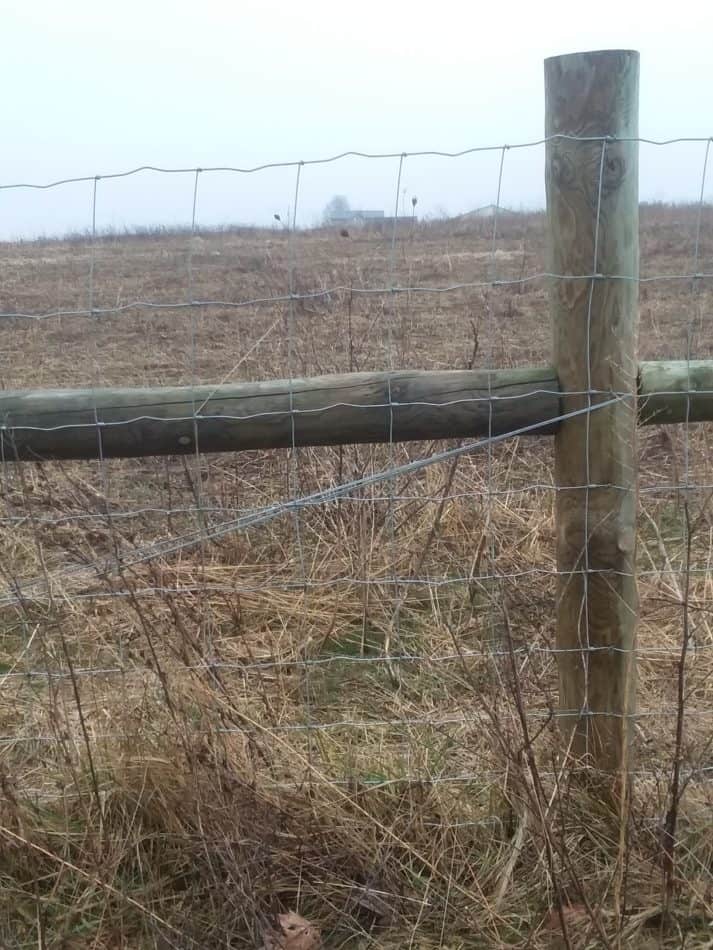
Corral gates for sheep fence
Some folks use corral panels for sheep fence, these look like pipe gates but sit up on looped “legs” so that there is a 16-18″ or so gap in the middle of the panel along the ground.
The top of the corral would be super for keeping in sheep but the bottom section may require some work, like filling in the gap along the bottom so that the sheep do not go under the corral.
A more mild mannered sheep might stay in the corral, but a more independently minded sheep or younger lambs are likely get out.
As soon as they were hungry, or just kind of felt like it, our sheep will get out of something like this, so we don’t use corral panels.
I do have to admit, if I came across some as quite the deal, I’d work something out to block the bottom space, but if I had to buy them new or even for a reasonable price, I would get something else.
You can use a combination of fence types for sheep
You can use a combination of fencing for your flock.
We have all types of fencing here, depending upon what we do in that area and whether or not the fence is a line we need all of the time or used occasionally, in which case it is probably just netting.
Our main fence type is electric netting, the 35″ kind, that we use in combination with other types of fencing that may be in that area.
For instance, if the sheep are only supposed to get part of an area, we use the permanent line to anchor the netting to, then run the netting around to section off the area.
This makes part of the fence woven wire and part of the fence netting. This is just one example of using both permanent and portable fencing for your sheep if that will work better on your farm.
Sheep under pressure need higher fences
The fence that you are using needs to be appropriate for the situation. Sheep under pressure need a higher fence than sheep just out and about grazing in the pasture or hanging out in a pen in the barn.
What do I mean by “under pressure”? I mean sheep that you are putting under stress, for instance, when you need to put the sheep into a smaller pen to deworm them or catch them for shearing.
These sheep are under pressure and will push the fence harder and be more likely to jump out of a shorter fence that would have held them under normal conditions.
We have found that when we need to tighten down a group to work them (work means give care, like shots or trim hooves), using a solid side, like a pipe gate, works better than using something bendable.
And, using something taller, like a cattle panel, is much better than something with a short side, like a hog panel.
Even if the sheep normally stay behind a shorter fence, when you add pressure they need a more secure fence to hold them.
For another resource on sheep fencing, consider reading: Sheep 201: Fencing, which goes over the different types of sheep fencing and what is required from each to contain the flock.
